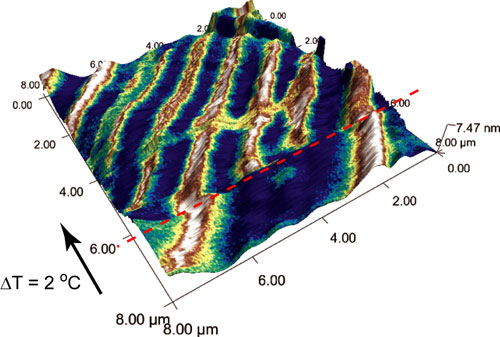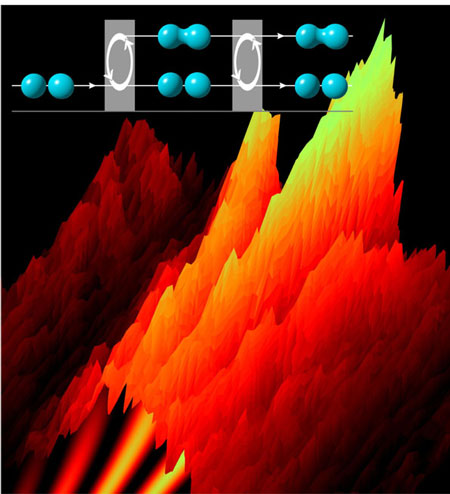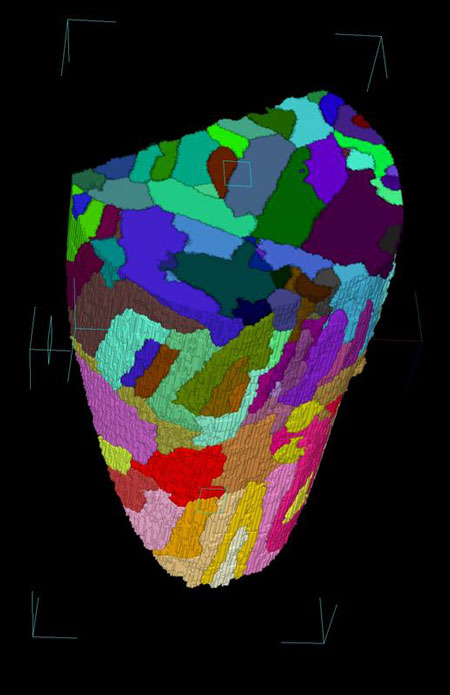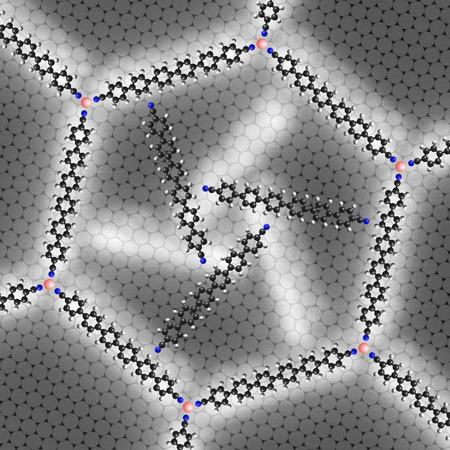To improve the tumor-specific delivery of drug to tumors, a team of investigators has created a system of nanoparticles-within-a-nanoparticle that can be directed to and concentrated at the site of tumor using a magnetic field. Once at the tumor site, radiofrequency irradiation triggers drug release from the nanoparticles, bathing the tumors in drug and markedly reducing the growth of the tumors.
Nov 23rd, 2010
Read more
In attempt to develop a new therapeutic approach to treating peritoneal metastases, a research team at Boston University has developed a novel, drug-loaded polymeric nanoparticle that responds to the acidic pH inside tumor cells by expanding, releasing the anticancer agent paclitaxel slowly over a period of 24 hours.
Nov 23rd, 2010
Read more
Researchers have developed an in vitro method for assessing kinase activity in minute tissue samples from patients. The method involves an integrated microfluidics and imaging platform that can reproducibly measure kinase enzymatic activity from as few as 3,000 cells.
Nov 23rd, 2010
Read more
Gold nanoparticles have shown promise as miniature thermal scalpels that when irradiated with near-infrared light are capable of cooking tumors to death. Now, a team of investigators have found that gold nanoshells can be used to deliver just a little heat to breast tumor cells already treated with radiation, boosting the killing power of both therapies.
Nov 23rd, 2010
Read more
In 2007, Mehmet Toner and Daniel Haber and their collaborators at Massachusetts General Hospital and Harvard Medical School developed a microfluidic device capable of trapping rare circulating tumor cells (CTCs) from the blood of cancer patients. Since then, these investigators, working with Harvard Medical School colleague Shyamala Maheswaren, have shown that captured CTCs can be used to characterize tumors from patients with lung and prostate cancer.
Nov 23rd, 2010
Read more
 A systematic study of phase changes in vanadium dioxide has solved a mystery that has puzzled scientists for decades, according to researchers at the Department of Energy's Oak Ridge National Laboratory.
A systematic study of phase changes in vanadium dioxide has solved a mystery that has puzzled scientists for decades, according to researchers at the Department of Energy's Oak Ridge National Laboratory.
Nov 23rd, 2010
Read more
Tel Aviv researchers apply an industrial monitoring technique to orthopedic diagnoses.
Nov 23rd, 2010
Read more
Chemists from Copenhagen, Potsdam and Hanau have taken the first step towards producing fuel cells using very little of the precious metal.
Nov 23rd, 2010
Read more
ANEC, The European Consumer Voice in Standardisation and BEUC, the European Consumers' Organisation have published their reply to the European Commission public consultation on 'Proposal for a Commission definition of the term nanomaterial'.
Nov 23rd, 2010
Read more
 Physicist Tilman Pfau and his group showed, that these superposition states last for several millionth of a second - too short for a real relationship, but long enough for molecules.
Physicist Tilman Pfau and his group showed, that these superposition states last for several millionth of a second - too short for a real relationship, but long enough for molecules.
Nov 23rd, 2010
Read more
 So far, it has only been possible to image magnetic domains in two dimensions. Now, for the first time, Scientists at Helmholtz-Zentrum Berlin (HZB) have managed to create three-dimensional images of these domains deep within magnetic materials.
So far, it has only been possible to image magnetic domains in two dimensions. Now, for the first time, Scientists at Helmholtz-Zentrum Berlin (HZB) have managed to create three-dimensional images of these domains deep within magnetic materials.
Nov 23rd, 2010
Read more
Application of a multicriteria decision making model based on probabilistic inversion to assess nanotechnology-enabled food products.
Nov 23rd, 2010
Read more
Easy-to-use nano-coating sprays with optical, electronic, biological properties, etc to cover surfaces! Teams from the Institut Charles Sadron, in collaboration with researchers from the Laboratoire de Biomateriaux et Ingenierie Tissulaire, have managed to improve and extend their technique of 'layer by layer' deposition.
Nov 23rd, 2010
Read more
 Wissenschaftlern der Technischen Universitaet Muenchen (TUM) ist es gelungen, stabfoermige Molekuele dazu zu bringen, sich selbst zu nur wenige Nanometer grossen Rotoren zusammen zu setzen.
Wissenschaftlern der Technischen Universitaet Muenchen (TUM) ist es gelungen, stabfoermige Molekuele dazu zu bringen, sich selbst zu nur wenige Nanometer grossen Rotoren zusammen zu setzen.
Nov 23rd, 2010
Read more
The Cleantech Open today released the complete list of winners that were announced at the 2010 Cleantech Open National Awards Gala and Expo.
Nov 23rd, 2010
Read more
FP7 is on course and is clearly making a significant contribution to European science and the development of the European Research Area. This is one of the key messages to emerge from the newly-published interim evaluation of the EU's Seventh Framework Programme (FP7).
Nov 23rd, 2010
Read more





 Subscribe to our Nanotechnology News feed
Subscribe to our Nanotechnology News feed